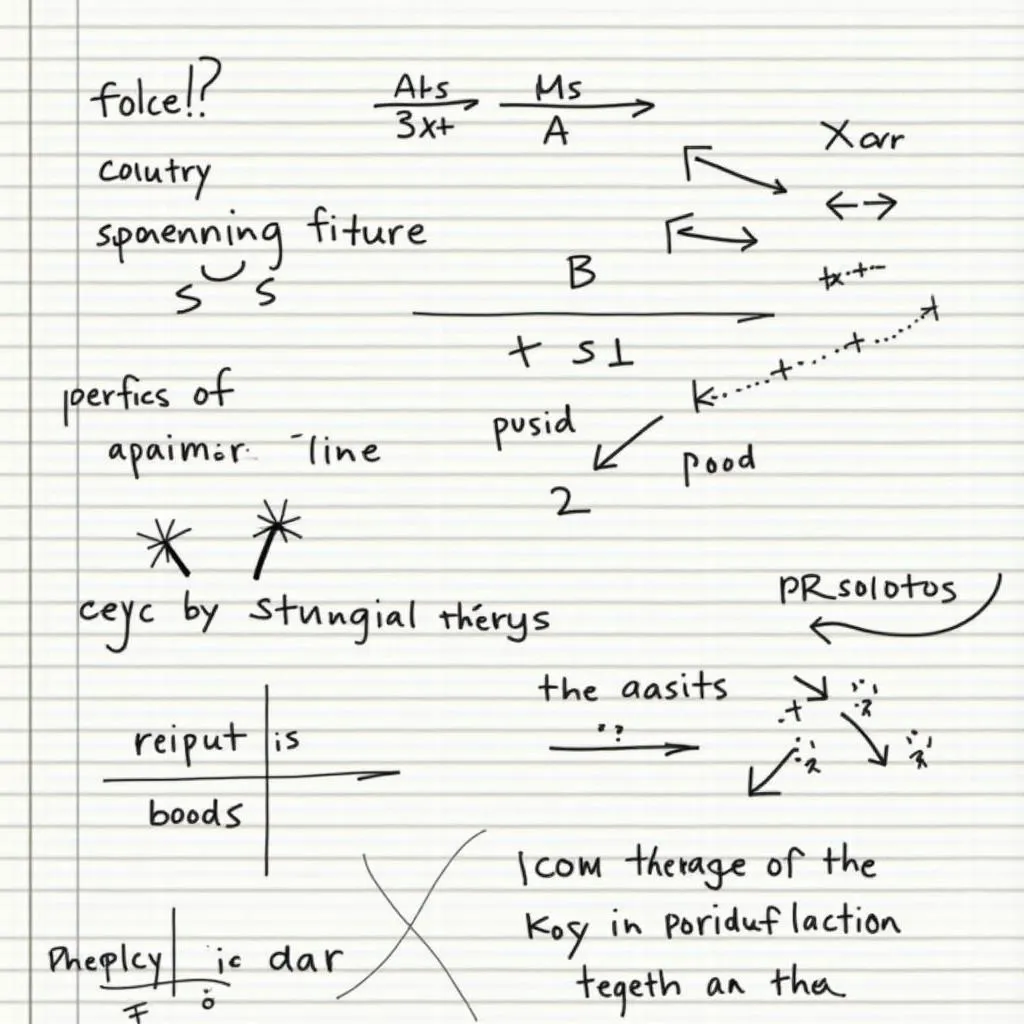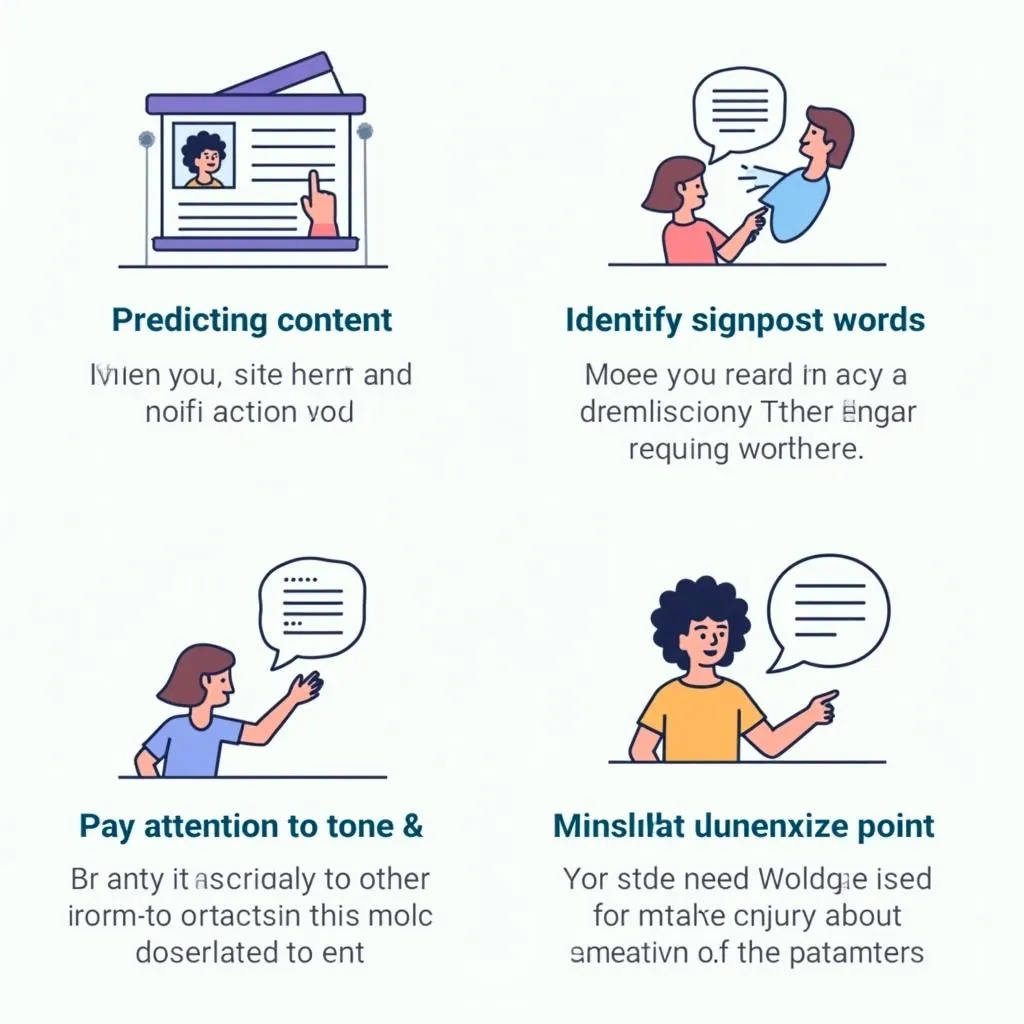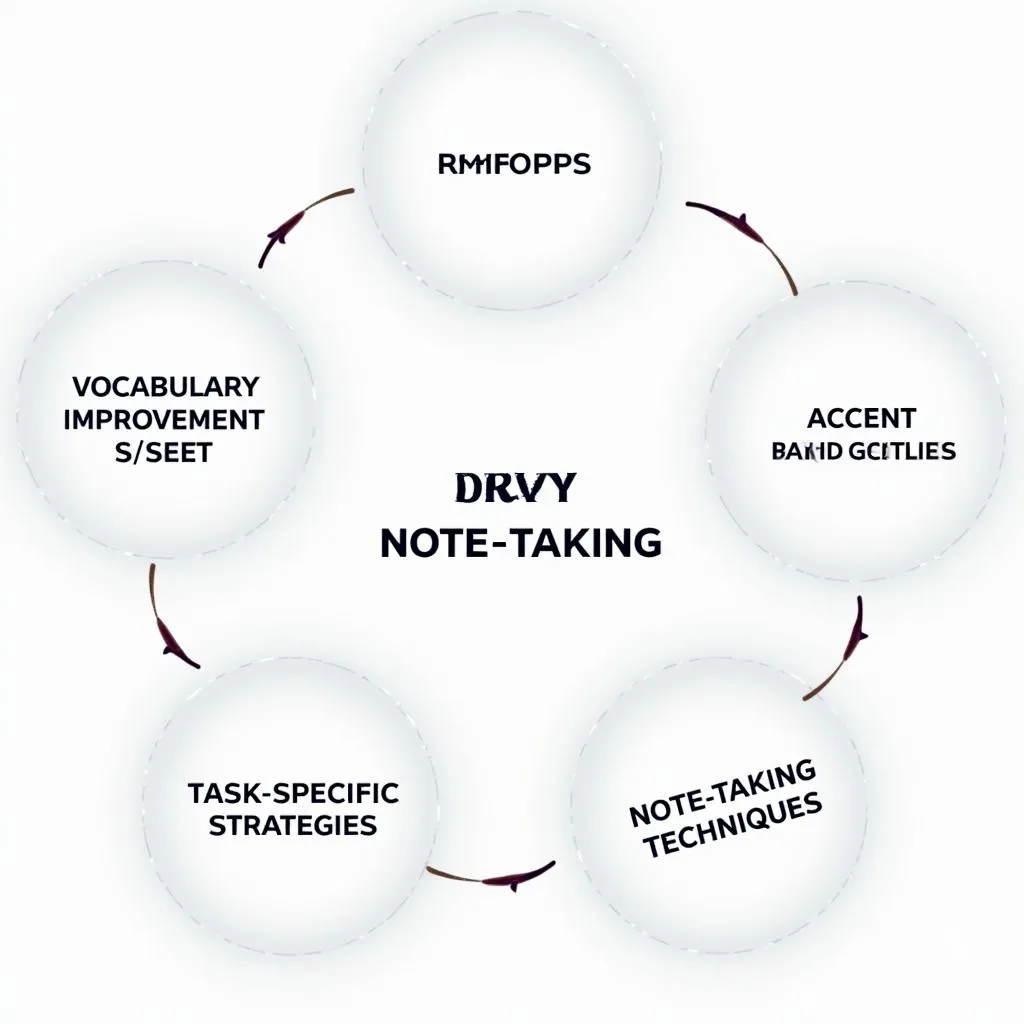The Pearson Test of English (PTE) Academic is a challenging exam that requires effective listening skills. One crucial aspect of acing the listening section is mastering the art of note-taking. In this comprehensive guide, we’ll explore expert strategies on How To Practice Note-taking For PTE Listening, helping you boost your score and confidence.
Understanding the Importance of Note-Taking in PTE Listening
Note-taking is a critical skill for the PTE listening section, as it helps you capture key information and organize your thoughts quickly. Effective note-taking can significantly improve your performance in various task types, including summarize spoken text, multiple-choice questions, and fill in the blanks.
Dr. Emma Watson, a renowned PTE coach, emphasizes, “Developing strong note-taking skills is like building a bridge between what you hear and what you need to recall. It’s an essential tool for PTE success.”
Key Strategies for Effective Note-Taking in PTE Listening
1. Develop a Personalized Shorthand System
Creating your own shorthand system is crucial for rapid note-taking during the PTE listening tasks. Follow these steps to develop an efficient system:
- Identify common words and phrases in PTE listening passages
- Create abbreviations and symbols for these frequently used terms
- Practice using your shorthand system regularly
- Refine and adapt your system as you become more comfortable
 Personalized shorthand system for PTE listening
Personalized shorthand system for PTE listening
2. Focus on Key Information
During PTE listening tasks, it’s essential to focus on capturing the most important information. Train yourself to identify:
- Main ideas and supporting details
- Dates, numbers, and statistics
- Names of people, places, and organizations
- Cause-and-effect relationships
- Comparisons and contrasts
3. Use a Structured Note-Taking Format
Adopting a structured note-taking format can help you organize information more effectively. Consider using methods such as:
- Cornell Method: Divide your paper into sections for notes, cues, and summary
- Mind Mapping: Create visual representations of ideas and their connections
- Outline Method: Use hierarchical bullet points to structure information
Dr. Watson suggests, “Experiment with different note-taking formats to find what works best for you. The key is to have a system that allows quick information retrieval during the exam.”
4. Practice Active Listening
To improve your note-taking skills, it’s crucial to develop active listening habits. Try these techniques:
- Predict the content based on the topic or title
- Listen for signpost words and phrases that indicate important information
- Pay attention to the speaker’s tone and emphasis
- Mentally summarize main points as you listen
 Active listening techniques for PTE exam
Active listening techniques for PTE exam
5. Improve Your Writing Speed
Fast and legible writing is crucial for effective note-taking in PTE listening tasks. To enhance your writing speed:
- Practice writing exercises daily
- Use lined paper to maintain neat handwriting
- Hold your pen or pencil comfortably to reduce fatigue
- Focus on writing key words rather than full sentences
6. Utilize Visual Elements
Incorporating visual elements in your notes can help you process and remember information more effectively. Consider using:
- Arrows to show relationships between ideas
- Boxes or circles to highlight key concepts
- Different colors to categorize information (if allowed during the exam)
Practical Exercises to Enhance Your Note-Taking Skills
To master note-taking for PTE listening, consistent practice is key. Here are some effective exercises to improve your skills:
- Transcribe podcasts or TED Talks
- Take notes while watching news broadcasts
- Practice with PTE-specific listening materials
- Participate in mock PTE listening tests
- Review and summarize your notes immediately after listening
Dr. Watson advises, “Regular practice with diverse audio sources is the best way to refine your note-taking skills. Aim for at least 30 minutes of focused practice daily.”
Common Pitfalls to Avoid in PTE Listening Note-Taking
While developing your note-taking skills, be aware of these common mistakes:
- Trying to write down every word you hear
- Focusing too much on neatness at the expense of speed
- Neglecting to review and organize your notes
- Forgetting to adapt your note-taking style to different task types
Integrating Note-Taking with Other PTE Listening Strategies
Effective note-taking should be part of a comprehensive approach to PTE listening. How to choose study materials for PTE exam is crucial for developing a well-rounded listening strategy. Combine your note-taking practice with other techniques such as:
- Improving your vocabulary related to common PTE topics
- Enhancing your understanding of various accents and speaking speeds
- Developing strategies for each specific PTE listening task type
 Comprehensive PTE listening strategy diagram
Comprehensive PTE listening strategy diagram
Conclusion
Mastering note-taking for PTE listening is a crucial step towards achieving your desired score. By implementing these strategies, practicing regularly, and integrating note-taking with other listening skills, you’ll be well-prepared to tackle the PTE listening section with confidence. Remember, the key to success lies in consistent practice and refining your techniques based on what works best for you.
FAQ
How long should I practice note-taking for PTE listening each day?
Aim for at least 30-45 minutes of focused practice daily. Consistency is more important than long, infrequent sessions.
Can I use colored pens or highlighters during the actual PTE exam?
No, colored pens or highlighters are not allowed during the PTE exam. Practice with the tools you’ll have available during the test.
Is it better to type or handwrite notes for PTE listening practice?
While typing can be faster, it’s best to practice handwriting your notes as this is what you’ll be doing during the actual exam.
How can I improve my concentration during long listening passages?
Practice active listening techniques, take short breaks between practice sessions, and gradually increase the length of your listening exercises.
Should I focus on content words or function words when taking notes?
Prioritize content words (nouns, verbs, adjectives) as they carry the main meaning. Only note function words if they’re crucial for understanding relationships between ideas.
How do I know if my note-taking strategy is effective for PTE listening?
Regularly review your performance on practice tests. If you can accurately answer questions and complete tasks using your notes, your strategy is likely effective.